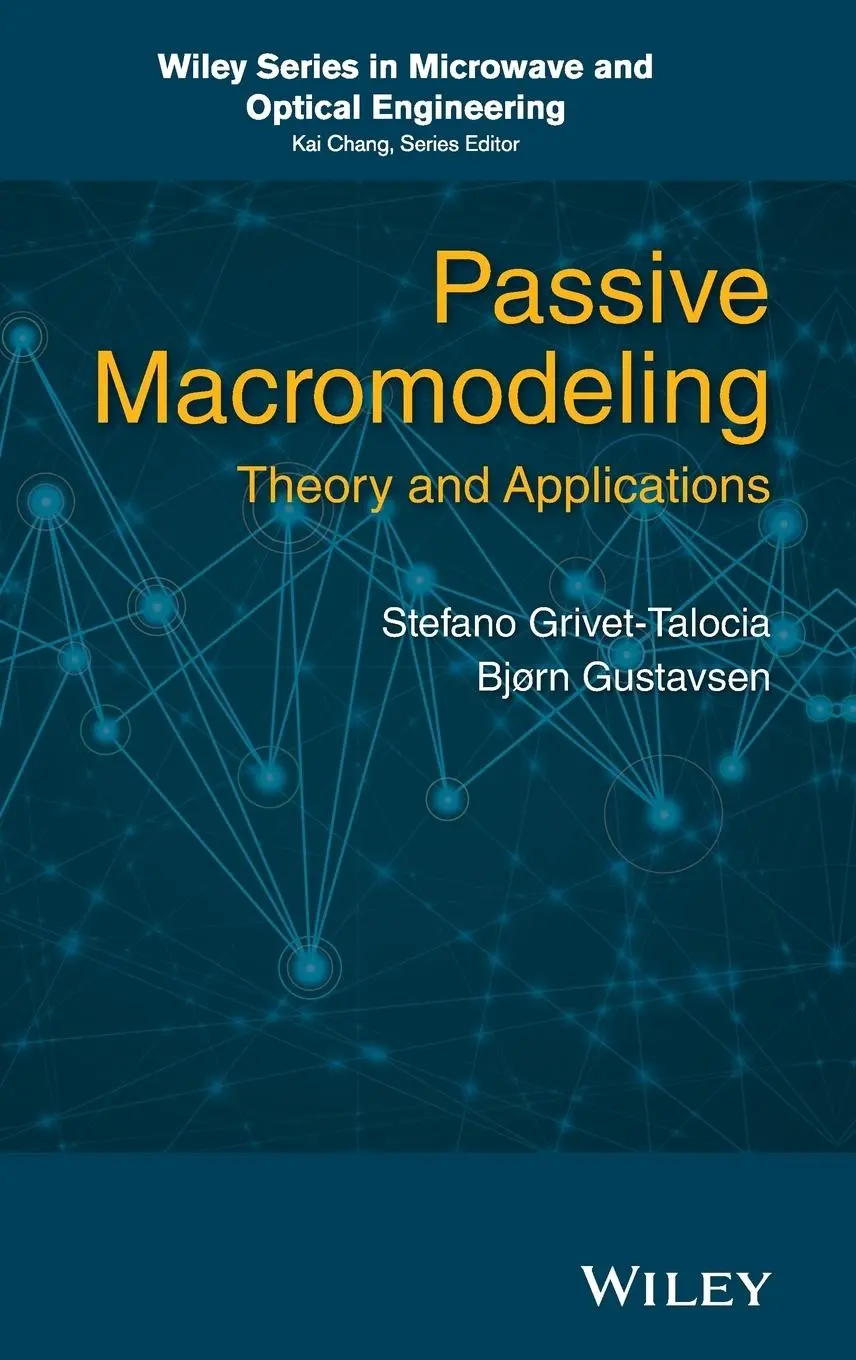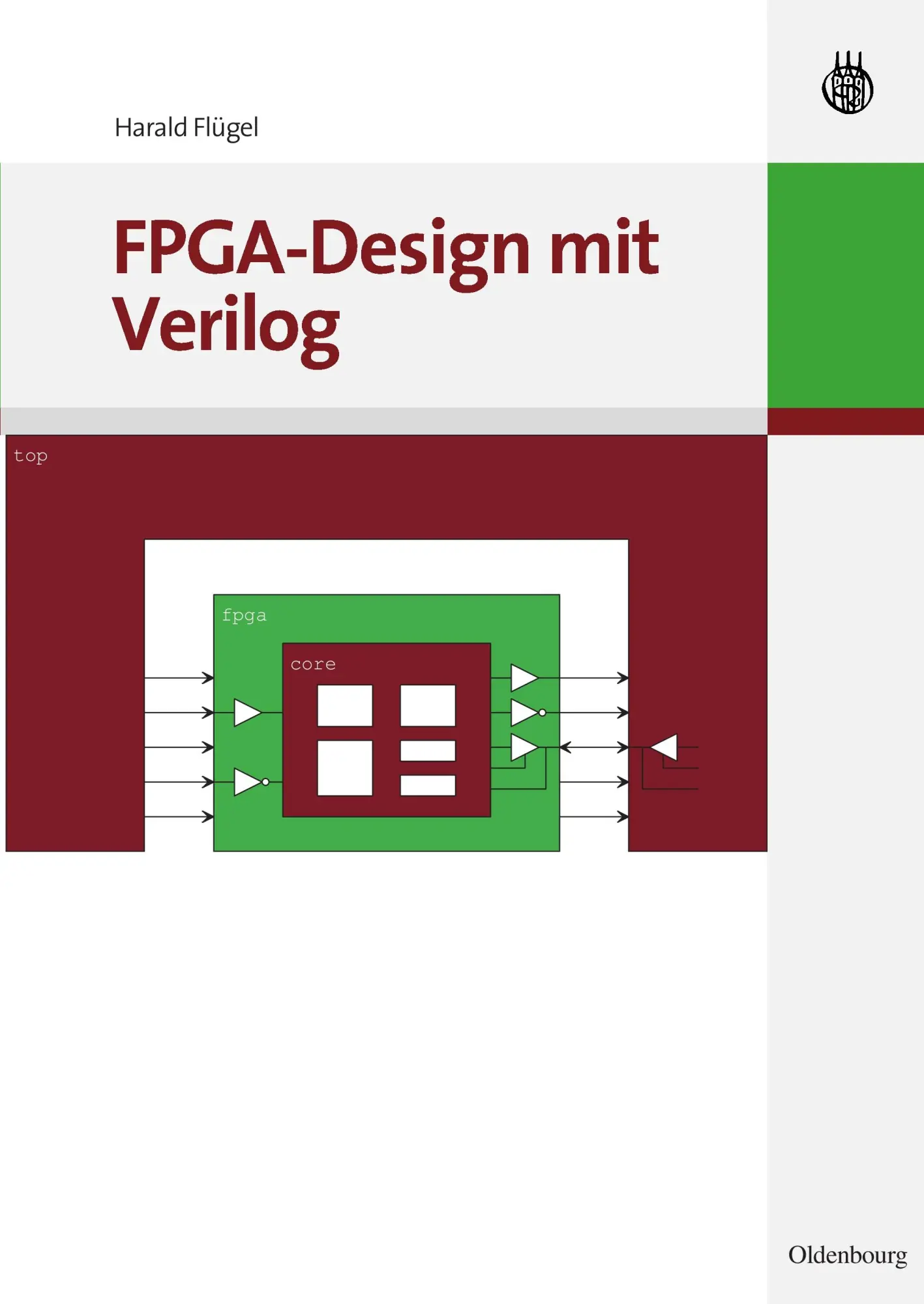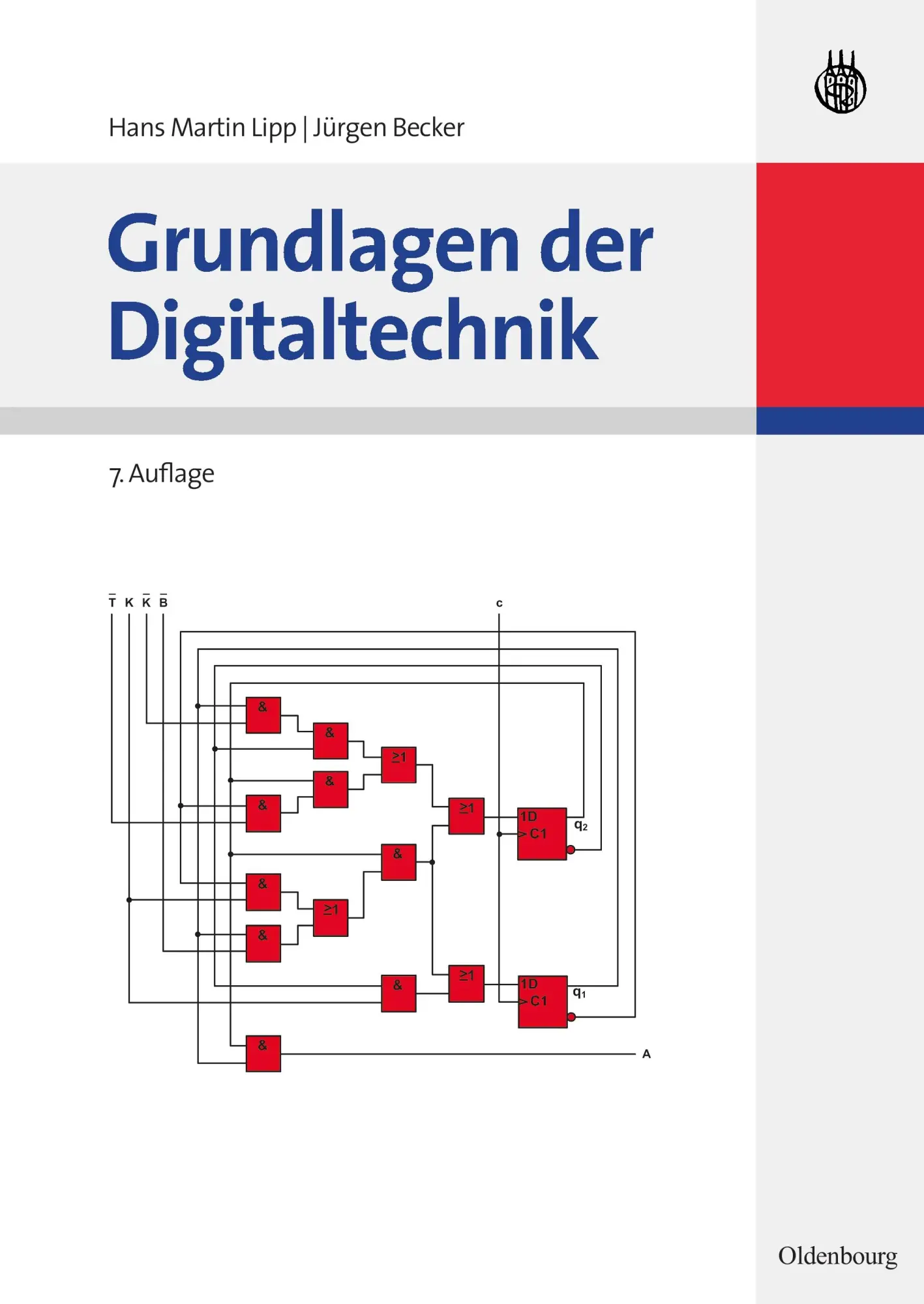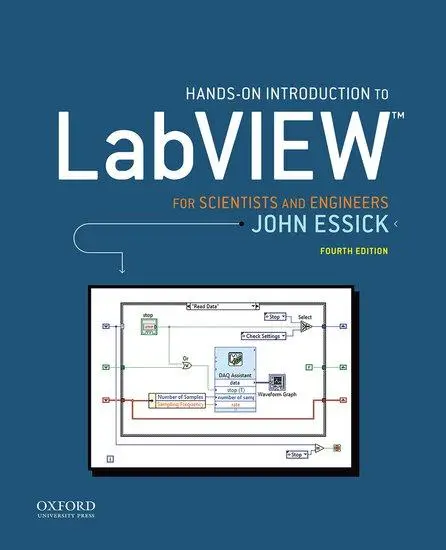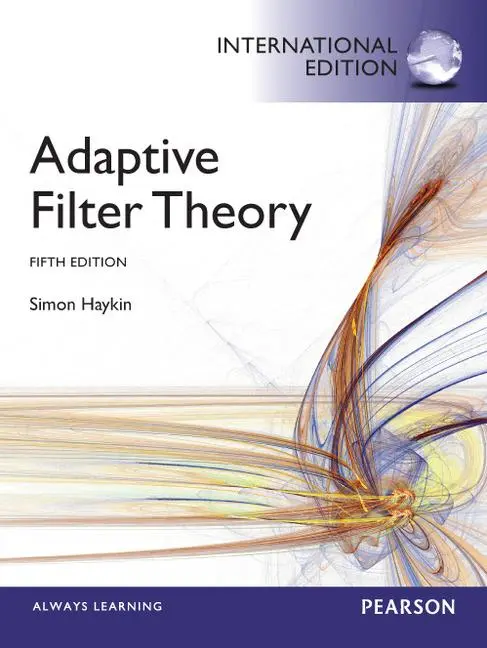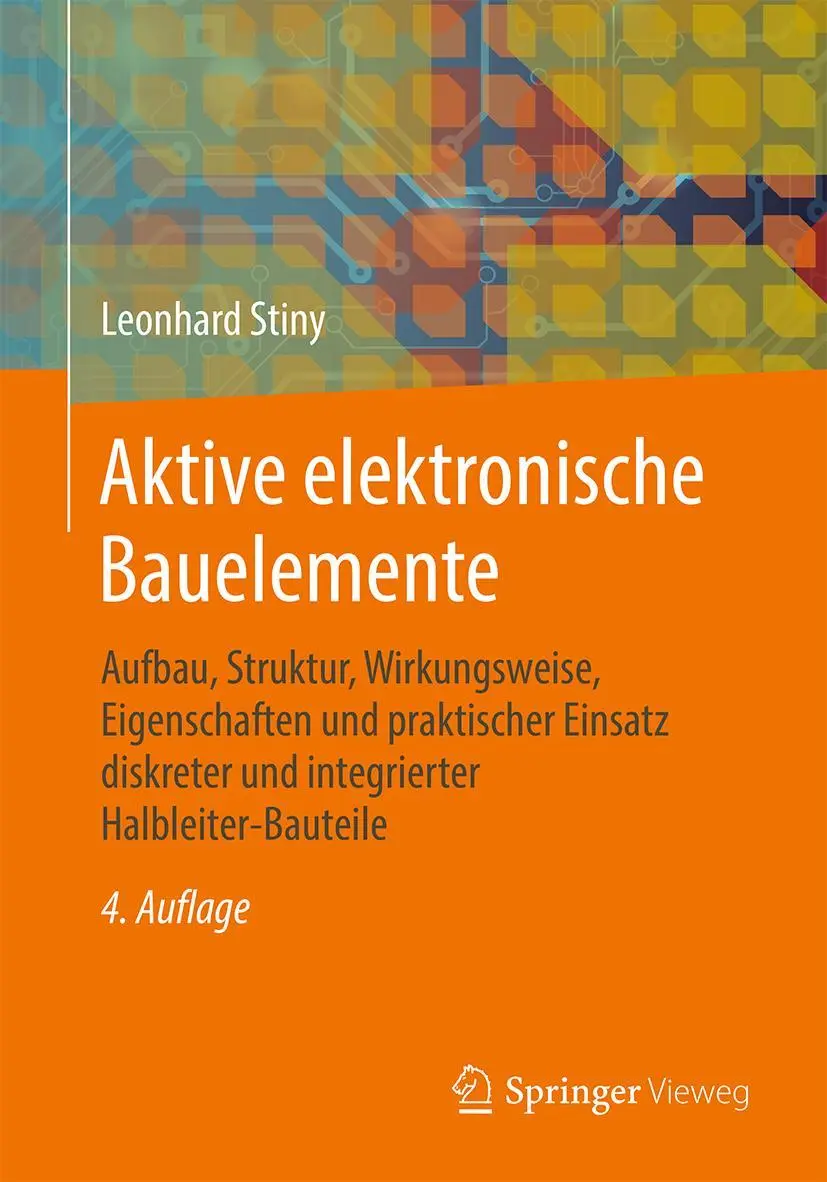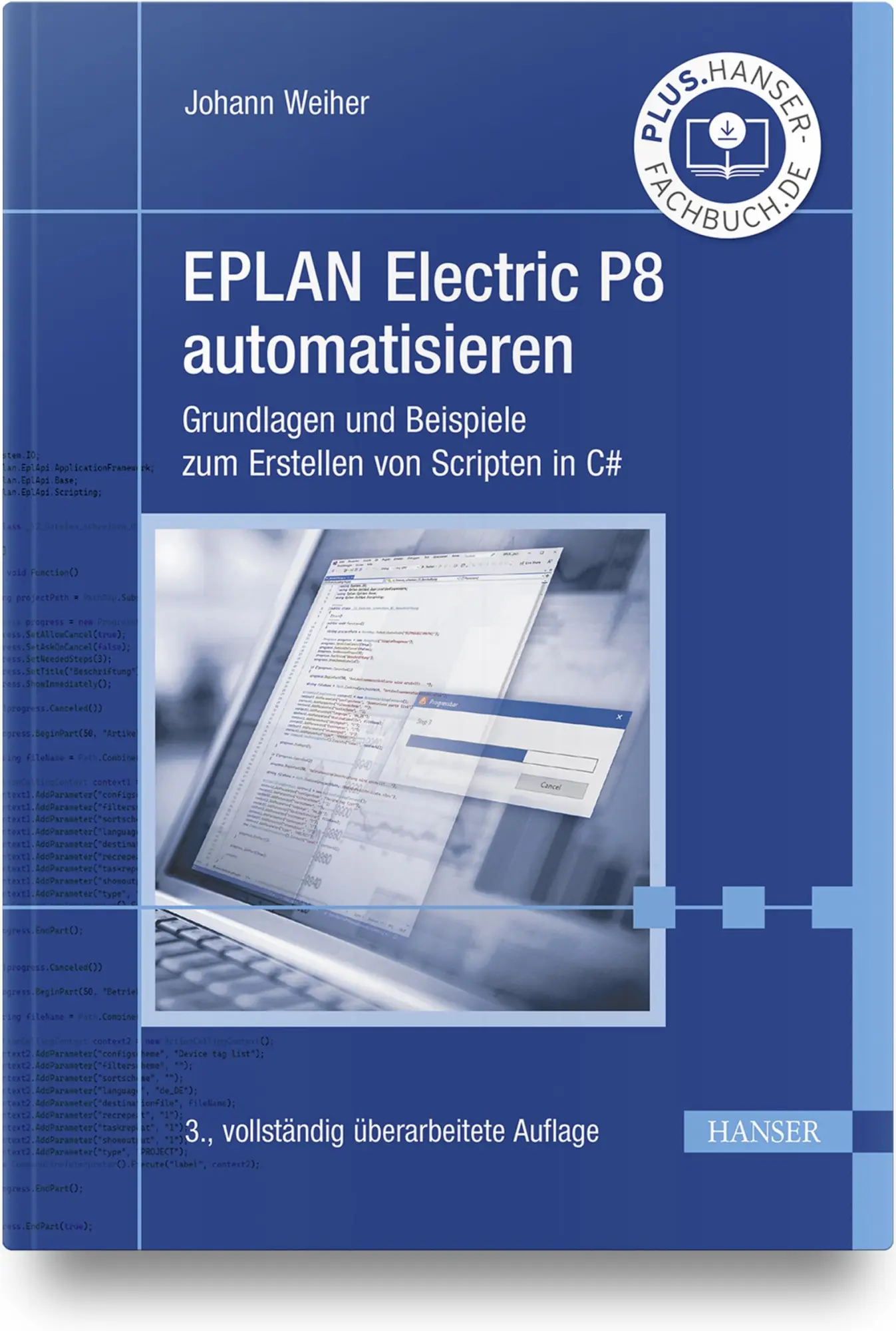165,00 €*
Versandkostenfrei per Post / DHL
Aktuell nicht verfügbar
This book offers coverage of developments in linear macromodeling, with a focus on effective, proven methods. After starting with a definition of the fundamental properties that must characterize models of physical systems, the authors discuss several prominent passive macromodeling algorithms for lumped and distributed systems and compare them under accuracy, efficiency, and robustness standpoints. The book includes chapters with standard background material (such as linear time-invariant circuits and systems, basic discretization of field equations, state-space systems), as well as appendices collecting basic facts from linear algebra, optimization templates, and signals and transforms. The text also covers more technical and advanced topics, intended for the specialist, which may be skipped at first reading.
* Provides coverage of black-box passive macromodeling, an approach developed by the authors
* Elaborates on main concepts and results in a mathematically precise way using easy-to-understand language
* Illustrates macromodeling concepts through dedicated examples
* Includes a comprehensive set of end-of-chapter problems and exercises
Passive Macromodeling: Theory and Applications serves as a reference for senior or graduate level courses in electrical engineering programs, and to engineers in the fields of numerical modeling, simulation, design, and optimization of electrical/electronic systems.
Stefano Grivet-Talocia, PhD, is an Associate Professor of Circuit Theory at the Politecnico di Torino in Turin, Italy, and President of IdemWorks. Dr. Grivet-Talocia is author of over 150 technical papers published in international journals and conference proceedings. He invented several algorithms in the area of passive macromodeling, making them available through IdemWorks.
Bjørn Gustavsen, PhD, is a Chief Research Scientist in Energy Systems at SINTEF Energy Research in Trondheim, Norway. More than ten years ago, Dr. Gustavsen developed the original version of the vector fitting method with Prof. Semlyen at the University of Toronto. The vector fitting method is one of the most widespread approaches for model extraction. Dr. Gustavsen is also an IEEE fellow.
This book offers coverage of developments in linear macromodeling, with a focus on effective, proven methods. After starting with a definition of the fundamental properties that must characterize models of physical systems, the authors discuss several prominent passive macromodeling algorithms for lumped and distributed systems and compare them under accuracy, efficiency, and robustness standpoints. The book includes chapters with standard background material (such as linear time-invariant circuits and systems, basic discretization of field equations, state-space systems), as well as appendices collecting basic facts from linear algebra, optimization templates, and signals and transforms. The text also covers more technical and advanced topics, intended for the specialist, which may be skipped at first reading.
* Provides coverage of black-box passive macromodeling, an approach developed by the authors
* Elaborates on main concepts and results in a mathematically precise way using easy-to-understand language
* Illustrates macromodeling concepts through dedicated examples
* Includes a comprehensive set of end-of-chapter problems and exercises
Passive Macromodeling: Theory and Applications serves as a reference for senior or graduate level courses in electrical engineering programs, and to engineers in the fields of numerical modeling, simulation, design, and optimization of electrical/electronic systems.
Stefano Grivet-Talocia, PhD, is an Associate Professor of Circuit Theory at the Politecnico di Torino in Turin, Italy, and President of IdemWorks. Dr. Grivet-Talocia is author of over 150 technical papers published in international journals and conference proceedings. He invented several algorithms in the area of passive macromodeling, making them available through IdemWorks.
Bjørn Gustavsen, PhD, is a Chief Research Scientist in Energy Systems at SINTEF Energy Research in Trondheim, Norway. More than ten years ago, Dr. Gustavsen developed the original version of the vector fitting method with Prof. Semlyen at the University of Toronto. The vector fitting method is one of the most widespread approaches for model extraction. Dr. Gustavsen is also an IEEE fellow.
Bjørn Gustavsen, PhD, is a Chief Research Scientist in Energy Systems at SINTEF Energy Research in Trondheim, Norway. More than ten years ago, Dr. Gustavsen developed the original version of the vector fitting method with Prof. Semlyen at the University of Toronto. The vector fitting method is one of the most widespread approaches for model extraction. Dr. Gustavsen is also an IEEE fellow.
Preface xix
1 Introduction 1
1.1 Why Macromodeling? 1
1.2 Scope 4
1.3 Macromodeling Flows 6
1.3.1 Macromodeling via Model Order Reduction 6
1.3.2 Macromodeling from Field Solver Data 7
1.3.3 Macromodeling from Measured Responses 8
1.4 Rational Macromodeling 9
1.5 Physical Consistency Requirements 11
1.6 Time-Domain Implementation 15
1.7 An Example 16
1.8 What Can Go Wrong? 17
2 Linear Time-Invariant Circuits and Systems 23
2.1 Basic Definitions 24
2.1.1 Linearity 24
2.1.2 Memory and Causality 26
2.1.3 Time Invariance 26
2.1.4 Stability 27
2.1.5 Passivity 28
2.2 Linear Time-Invariant Systems 28
2.2.1 Impulse Response 29
2.2.2 Properties of LTI Systems 32
2.3 Frequency-Domain Characterizations 33
2.4 Laplace and Fourier Transforms 34
2.4.1 Bilateral Laplace Transform and Transfer Matrices 34
2.4.2 Causal LTI Systems and the Unilateral Laplace Transform 36
2.4.3 Fourier Transform 36
2.5 Signal and System Norms¿ 37
2.5.1 Signal Norms 38
2.5.2 System Norms 41
2.6 Multiport Representations 44
2.6.1 Ports and Terminals 44
2.6.2 Immittance Representations 45
2.6.3 Scattering Representations 46
2.6.4 Reciprocity 48
2.7 Passivity 49
2.7.1 Power and Energy 50
2.7.2 Passivity and Causality 51
2.7.3 The Static Case 52
2.7.4 The Dynamic Case 53
2.7.5 Positive Realness Bounded Realness and Passivity 54
2.7.6 Some Examples 56
2.8 Stability and Causality 59
2.8.1 Laplace-Domain Conditions for Causality 61
2.8.2 Laplace-Domain Conditions for BIBO Stability 62
2.8.3 Causality and Stability 62
2.9 Boundary Values and Dispersion Relations¿ 64
2.9.1 Assumptions 64
2.9.2 Reconstruction of H(s) for s ¿ ¿+ 65
2.9.3 Reconstruction of H(s) for s ¿ j¿ 65
2.9.4 Causality and Dispersion Relations 67
2.9.5 Generalizations 68
2.10 Passivity Conditions on the Imaginary Axis¿ 70
Problems 71
3 Lumped LTI Systems 73
3.1 An Example from Circuit Theory 74
3.1.1 Variation on a Theme 76
3.1.2 Driving-Point Impedance 77
3.2 State-Space and Descriptor Forms 77
3.2.1 Singular Descriptor Forms 77
3.2.2 Internal Representations of Lumped LTI Systems 79
3.3 The Zero-Input Response 80
3.4 Internal Stability 81
3.4.1 Lyapunov Stability 81
3.4.2 Internal Stability of LTI Systems 83
3.5 The Lyapunov Equation 84
3.6 The Zero-State Response 87
3.6.1 Impulse Response 88
3.7 Operations on State-Space Systems 89
3.7.1 Interconnections 90
3.7.2 Inversion 91
3.7.3 Similarity Transformations 91
3.8 Gramians 91
3.8.1 Observability 92
3.8.2 Controllability 93
3.8.3 Minimal Realizations 95
3.9 Reciprocal State-Space Systems 95
3.10 Norms 97
3.10.1 L2 Norm 98
3.10.2 H¿ Norm 99
Problems 100
4 Distributed LTI Systems 103
4.1 One-Dimensional Distributed Circuits 104
4.1.1 The Discrete-Space Case 104
4.1.2 The Continuous-Space Case 106
4.1.3 Discussion 109
4.2 Two-Dimensional Distributed Circuits¿ 111
4.2.1 The Discrete-Space Case 112
4.2.2 The Continuous-Space Case 114
4.2.3 A Closed-Form Solution 116
4.2.4 Spatial Discretization 118
4.2.5 Discussion 120
4.3 General Electromagnetic Characterization 123
4.3.1 3D Electromagnetic Modeling 126
4.3.2 Summary and Outlook 130
Problems 131
5 Macromodeling Via Model Order Reduction 135
5.1 Model Order Reduction 135
5.2 Moment Matching 136
5.2.1 Moments 136
5.2.2 Padé Approximation and AWE 138
5.2.3 Complex Frequency Hopping 139
5.3 Reduction by Projection 140
5.3.1 Krylov Subspaces 141
5.3.2 Implicit Moment Matching: The Orthogonal Case 142
5.3.3 The Arnoldi Process 143
5.3.4 PRIMA 145
5.3.5 Multipoint Moment Matching 147
5.3.6 An Example 148
5.3.7 Implicit Moment Matching: The Biorthogonal Case 151
5.3.8 Padé Via Lanczos (PVL) 154
5.4 Reduction by Truncation 155
5.4.1 Balancing 156
5.4.2 Balanced Truncation 158
5.5 Advanced Model Order Reduction¿ 159
5.5.1 Passivity-Preserving Balanced Truncation 159
5.5.2 Balanced Truncation of Descriptor Systems 160
5.5.3 Reducing Large-Scale Systems 161
Problems 166
6 Black-Box Macromodeling and Curve Fitting 169
6.1 Basic Curve Fitting 171
6.1.1 Linear Least Squares 172
6.1.2 Maximum Likelihood Estimation 174
6.1.3 Polynomial Fitting 176
6.2 Direct Rational Fitting 182
6.2.1 Polynomial Ratio Form 183
6.2.2 Pole-Zero Form 183
6.2.3 Partial Fraction Form 184
6.2.4 Partial Fraction Form with Fixed Poles 184
6.2.5 Nonlinear Least Squares 185
6.3 Linearization via Weighting 187
6.4 Asymptotic Pole-Zero Placement 191
6.5 ARMA Modeling 193
6.5.1 Modeling from Time-Domain Responses 195
6.5.2 Modeling from Frequency Domain Responses 197
6.5.3 Conversion of ARMA Models 201
6.6 Prony's Method 203
6.7 Subspace-Based Identification¿ 204
6.7.1 Discrete-Time State-Space Systems 204
6.7.2 Macromodeling from Impulse Response Samples 205
6.7.3 Macromodeling from Input-Output Samples 207
6.7.4 From Discrete-Time to Continuous-Time State-Space Models 210
6.7.5 Frequency-Domain Subspace Identification 211
6.7.6 Generalized Pencil-of-Function Methods 212
6.7.7 Examples 214
6.8 Loewner Matrix Interpolation¿ 215
6.8.1 The Scalar Case 216
6.8.2 The Multiport Case 218
Problems 222
7 The Vector Fitting Algorithm 225
7.1 The Sanathanan-Koerner Iteration 226
7.1.1 The Steiglitz-McBride Iteration 229
7.2 The Generalized Sanathanan-Koerner Iteration 231
7.2.1 General Basis Functions 231
7.2.2 The Partial Fraction Basis 233
7.3 Frequency-Domain Vector Fitting 234
7.3.1 A Simple Model Transformation 234
7.3.2 Computing the New Poles 236
7.3.3 The Vector Fitting Iteration 237
7.3.4 From GSK to VF 239
7.4 Consistency And Convergence 241
7.4.1 Consistency 241
7.4.2 Convergence 242
7.4.3 Formal Convergence Analysis 245
7.5 Practical VF Implementation 247
7.5.1 Causality Stability and Realness 247
7.5.2 Order Selection and Initialization 253
7.5.3 Improving Numerical Robustness 254
7.6 Relaxed Vector Fitting 256
7.6.1 Weight Normalization Noise and Convergence 256
7.6.2 Relaxed Vector Fitting 259
7.7 Tuning VF 264
7.7.1 Weighting and Error Control 264
7.7.2 High-Frequency Behavior 266
7.7.3 High-Frequency Constraints 268
7.7.4 DC Point Enforcement 269
7.7.5 Simultaneous Constraints 271
7.8 Time-Domain Vector Fitting 273
7.9 z-Domain Vector Fitting 278
7.10 Orthonormal Vector Fitting 281
7.10.1 Orthonormal Rational Basis Functions 281
7.10.2 The OVF Iteration 284
7.10.3 The OVF Pole Relocation Step 285
7.10.4 Finding Residues 286
7.11 Other Variants 288
7.11.1 Magnitude Vector Fitting 288
7.11.2 Vector Fitting with L1 Norm Minimization 291
7.11.3 Dealing with Higher Pole Multiplicities 293
7.11.4 Including Higher Order Derivatives 294
7.11.5 Hard Relocation of Poles 295
7.12 Notes on Overfitting and Ill-Conditioning 296
7.12.1 Exact Model Identification 296
7.12.2 Curve Fitting 297
7.13 Application Examples 299
7.13.1 Surface Acoustic Wave Filter 299
7.13.2 Subnetwork Equivalent 301
7.13.3 Transformer Modeling from Time-Domain Measurements 303
Problems 303
8 Advanced Vector Fitting for Multiport Problems 307
8.1 Introduction 307
8.2 Adapting VF to Multiple Responses 308
8.2.1 Pole Identification 308
8.2.2 Fast Vector Fitting 310
8.2.3 Residue Identification 311
8.3 Multiport Formulations 312
8.3.1 Single-Element Modeling: Multi-SISO Structure 314
8.3.2 Single-Column Modeling: Multi-SIMO Structure 316
8.3.3 Matrix Modeling: MIMO Structure 317
8.3.4 Matrix Modeling: Minimal Realizations 318
8.3.5 Sparsity Considerations 322
8.4 Enforcing Reciprocity 322
8.4.1 External Reciprocity 324
8.4.2 Internal Reciprocity¿ 325
8.5 Compressed Macromodeling 329
8.5.1 Data Compression 329
8.5.2 Compressed Rational Approximation 330
8.5.3 An Application Example 331
8.6 Accuracy Considerations 333
8.6.1 Noninteracting Models 333
8.6.2 Interacting Models Scalar Case 334
8.6.3 Error Magnification in Multiport Systems 338
8.7 Overcoming Error Magnification 340
8.7.1 Elementwise Inverse Weighting 340
8.7.2 Diagonalization 342
8.7.3 Mode-Revealing Transformations 347
8.7.4 Modal Vector Fitting 356
8.7.5 External and Internal Ports 358
Problems 363
9 Passivity Characterization of Lumped LTI Systems 365
9.1 Internal Characterization of Passivity 365
9.1.1 A First Order Example 365
9.1.2 The Dissipation Inequality 367
9.1.3 Lumped LTI Systems 368
9.2 Passivity of Lumped Immittance Systems 368
9.2.1 Rational Positive Real Matrices 369
9.2.2 Extracting Purely Imaginary Poles 372
9.2.3 The Positive Real Lemma 376
...| Erscheinungsjahr: | 2015 |
|---|---|
| Fachbereich: | Nachrichtentechnik |
| Genre: | Importe, Technik |
| Rubrik: | Naturwissenschaften & Technik |
| Medium: | Buch |
| Inhalt: | 904 S. |
| ISBN-13: | 9781118094914 |
| ISBN-10: | 1118094913 |
| Sprache: | Englisch |
| Einband: | Gebunden |
| Autor: |
Grivet-Talocia, Stefano
Gustavsen, Bjorn |
| Hersteller: |
Wiley
John Wiley & Sons |
| Verantwortliche Person für die EU: | Wiley-VCH GmbH, Boschstr. 12, D-69469 Weinheim, product-safety@wiley.com |
| Maße: | 240 x 161 x 52 mm |
| Von/Mit: | Stefano Grivet-Talocia (u. a.) |
| Erscheinungsdatum: | 20.04.2015 |
| Gewicht: | 1,502 kg |
Bjørn Gustavsen, PhD, is a Chief Research Scientist in Energy Systems at SINTEF Energy Research in Trondheim, Norway. More than ten years ago, Dr. Gustavsen developed the original version of the vector fitting method with Prof. Semlyen at the University of Toronto. The vector fitting method is one of the most widespread approaches for model extraction. Dr. Gustavsen is also an IEEE fellow.
Preface xix
1 Introduction 1
1.1 Why Macromodeling? 1
1.2 Scope 4
1.3 Macromodeling Flows 6
1.3.1 Macromodeling via Model Order Reduction 6
1.3.2 Macromodeling from Field Solver Data 7
1.3.3 Macromodeling from Measured Responses 8
1.4 Rational Macromodeling 9
1.5 Physical Consistency Requirements 11
1.6 Time-Domain Implementation 15
1.7 An Example 16
1.8 What Can Go Wrong? 17
2 Linear Time-Invariant Circuits and Systems 23
2.1 Basic Definitions 24
2.1.1 Linearity 24
2.1.2 Memory and Causality 26
2.1.3 Time Invariance 26
2.1.4 Stability 27
2.1.5 Passivity 28
2.2 Linear Time-Invariant Systems 28
2.2.1 Impulse Response 29
2.2.2 Properties of LTI Systems 32
2.3 Frequency-Domain Characterizations 33
2.4 Laplace and Fourier Transforms 34
2.4.1 Bilateral Laplace Transform and Transfer Matrices 34
2.4.2 Causal LTI Systems and the Unilateral Laplace Transform 36
2.4.3 Fourier Transform 36
2.5 Signal and System Norms¿ 37
2.5.1 Signal Norms 38
2.5.2 System Norms 41
2.6 Multiport Representations 44
2.6.1 Ports and Terminals 44
2.6.2 Immittance Representations 45
2.6.3 Scattering Representations 46
2.6.4 Reciprocity 48
2.7 Passivity 49
2.7.1 Power and Energy 50
2.7.2 Passivity and Causality 51
2.7.3 The Static Case 52
2.7.4 The Dynamic Case 53
2.7.5 Positive Realness Bounded Realness and Passivity 54
2.7.6 Some Examples 56
2.8 Stability and Causality 59
2.8.1 Laplace-Domain Conditions for Causality 61
2.8.2 Laplace-Domain Conditions for BIBO Stability 62
2.8.3 Causality and Stability 62
2.9 Boundary Values and Dispersion Relations¿ 64
2.9.1 Assumptions 64
2.9.2 Reconstruction of H(s) for s ¿ ¿+ 65
2.9.3 Reconstruction of H(s) for s ¿ j¿ 65
2.9.4 Causality and Dispersion Relations 67
2.9.5 Generalizations 68
2.10 Passivity Conditions on the Imaginary Axis¿ 70
Problems 71
3 Lumped LTI Systems 73
3.1 An Example from Circuit Theory 74
3.1.1 Variation on a Theme 76
3.1.2 Driving-Point Impedance 77
3.2 State-Space and Descriptor Forms 77
3.2.1 Singular Descriptor Forms 77
3.2.2 Internal Representations of Lumped LTI Systems 79
3.3 The Zero-Input Response 80
3.4 Internal Stability 81
3.4.1 Lyapunov Stability 81
3.4.2 Internal Stability of LTI Systems 83
3.5 The Lyapunov Equation 84
3.6 The Zero-State Response 87
3.6.1 Impulse Response 88
3.7 Operations on State-Space Systems 89
3.7.1 Interconnections 90
3.7.2 Inversion 91
3.7.3 Similarity Transformations 91
3.8 Gramians 91
3.8.1 Observability 92
3.8.2 Controllability 93
3.8.3 Minimal Realizations 95
3.9 Reciprocal State-Space Systems 95
3.10 Norms 97
3.10.1 L2 Norm 98
3.10.2 H¿ Norm 99
Problems 100
4 Distributed LTI Systems 103
4.1 One-Dimensional Distributed Circuits 104
4.1.1 The Discrete-Space Case 104
4.1.2 The Continuous-Space Case 106
4.1.3 Discussion 109
4.2 Two-Dimensional Distributed Circuits¿ 111
4.2.1 The Discrete-Space Case 112
4.2.2 The Continuous-Space Case 114
4.2.3 A Closed-Form Solution 116
4.2.4 Spatial Discretization 118
4.2.5 Discussion 120
4.3 General Electromagnetic Characterization 123
4.3.1 3D Electromagnetic Modeling 126
4.3.2 Summary and Outlook 130
Problems 131
5 Macromodeling Via Model Order Reduction 135
5.1 Model Order Reduction 135
5.2 Moment Matching 136
5.2.1 Moments 136
5.2.2 Padé Approximation and AWE 138
5.2.3 Complex Frequency Hopping 139
5.3 Reduction by Projection 140
5.3.1 Krylov Subspaces 141
5.3.2 Implicit Moment Matching: The Orthogonal Case 142
5.3.3 The Arnoldi Process 143
5.3.4 PRIMA 145
5.3.5 Multipoint Moment Matching 147
5.3.6 An Example 148
5.3.7 Implicit Moment Matching: The Biorthogonal Case 151
5.3.8 Padé Via Lanczos (PVL) 154
5.4 Reduction by Truncation 155
5.4.1 Balancing 156
5.4.2 Balanced Truncation 158
5.5 Advanced Model Order Reduction¿ 159
5.5.1 Passivity-Preserving Balanced Truncation 159
5.5.2 Balanced Truncation of Descriptor Systems 160
5.5.3 Reducing Large-Scale Systems 161
Problems 166
6 Black-Box Macromodeling and Curve Fitting 169
6.1 Basic Curve Fitting 171
6.1.1 Linear Least Squares 172
6.1.2 Maximum Likelihood Estimation 174
6.1.3 Polynomial Fitting 176
6.2 Direct Rational Fitting 182
6.2.1 Polynomial Ratio Form 183
6.2.2 Pole-Zero Form 183
6.2.3 Partial Fraction Form 184
6.2.4 Partial Fraction Form with Fixed Poles 184
6.2.5 Nonlinear Least Squares 185
6.3 Linearization via Weighting 187
6.4 Asymptotic Pole-Zero Placement 191
6.5 ARMA Modeling 193
6.5.1 Modeling from Time-Domain Responses 195
6.5.2 Modeling from Frequency Domain Responses 197
6.5.3 Conversion of ARMA Models 201
6.6 Prony's Method 203
6.7 Subspace-Based Identification¿ 204
6.7.1 Discrete-Time State-Space Systems 204
6.7.2 Macromodeling from Impulse Response Samples 205
6.7.3 Macromodeling from Input-Output Samples 207
6.7.4 From Discrete-Time to Continuous-Time State-Space Models 210
6.7.5 Frequency-Domain Subspace Identification 211
6.7.6 Generalized Pencil-of-Function Methods 212
6.7.7 Examples 214
6.8 Loewner Matrix Interpolation¿ 215
6.8.1 The Scalar Case 216
6.8.2 The Multiport Case 218
Problems 222
7 The Vector Fitting Algorithm 225
7.1 The Sanathanan-Koerner Iteration 226
7.1.1 The Steiglitz-McBride Iteration 229
7.2 The Generalized Sanathanan-Koerner Iteration 231
7.2.1 General Basis Functions 231
7.2.2 The Partial Fraction Basis 233
7.3 Frequency-Domain Vector Fitting 234
7.3.1 A Simple Model Transformation 234
7.3.2 Computing the New Poles 236
7.3.3 The Vector Fitting Iteration 237
7.3.4 From GSK to VF 239
7.4 Consistency And Convergence 241
7.4.1 Consistency 241
7.4.2 Convergence 242
7.4.3 Formal Convergence Analysis 245
7.5 Practical VF Implementation 247
7.5.1 Causality Stability and Realness 247
7.5.2 Order Selection and Initialization 253
7.5.3 Improving Numerical Robustness 254
7.6 Relaxed Vector Fitting 256
7.6.1 Weight Normalization Noise and Convergence 256
7.6.2 Relaxed Vector Fitting 259
7.7 Tuning VF 264
7.7.1 Weighting and Error Control 264
7.7.2 High-Frequency Behavior 266
7.7.3 High-Frequency Constraints 268
7.7.4 DC Point Enforcement 269
7.7.5 Simultaneous Constraints 271
7.8 Time-Domain Vector Fitting 273
7.9 z-Domain Vector Fitting 278
7.10 Orthonormal Vector Fitting 281
7.10.1 Orthonormal Rational Basis Functions 281
7.10.2 The OVF Iteration 284
7.10.3 The OVF Pole Relocation Step 285
7.10.4 Finding Residues 286
7.11 Other Variants 288
7.11.1 Magnitude Vector Fitting 288
7.11.2 Vector Fitting with L1 Norm Minimization 291
7.11.3 Dealing with Higher Pole Multiplicities 293
7.11.4 Including Higher Order Derivatives 294
7.11.5 Hard Relocation of Poles 295
7.12 Notes on Overfitting and Ill-Conditioning 296
7.12.1 Exact Model Identification 296
7.12.2 Curve Fitting 297
7.13 Application Examples 299
7.13.1 Surface Acoustic Wave Filter 299
7.13.2 Subnetwork Equivalent 301
7.13.3 Transformer Modeling from Time-Domain Measurements 303
Problems 303
8 Advanced Vector Fitting for Multiport Problems 307
8.1 Introduction 307
8.2 Adapting VF to Multiple Responses 308
8.2.1 Pole Identification 308
8.2.2 Fast Vector Fitting 310
8.2.3 Residue Identification 311
8.3 Multiport Formulations 312
8.3.1 Single-Element Modeling: Multi-SISO Structure 314
8.3.2 Single-Column Modeling: Multi-SIMO Structure 316
8.3.3 Matrix Modeling: MIMO Structure 317
8.3.4 Matrix Modeling: Minimal Realizations 318
8.3.5 Sparsity Considerations 322
8.4 Enforcing Reciprocity 322
8.4.1 External Reciprocity 324
8.4.2 Internal Reciprocity¿ 325
8.5 Compressed Macromodeling 329
8.5.1 Data Compression 329
8.5.2 Compressed Rational Approximation 330
8.5.3 An Application Example 331
8.6 Accuracy Considerations 333
8.6.1 Noninteracting Models 333
8.6.2 Interacting Models Scalar Case 334
8.6.3 Error Magnification in Multiport Systems 338
8.7 Overcoming Error Magnification 340
8.7.1 Elementwise Inverse Weighting 340
8.7.2 Diagonalization 342
8.7.3 Mode-Revealing Transformations 347
8.7.4 Modal Vector Fitting 356
8.7.5 External and Internal Ports 358
Problems 363
9 Passivity Characterization of Lumped LTI Systems 365
9.1 Internal Characterization of Passivity 365
9.1.1 A First Order Example 365
9.1.2 The Dissipation Inequality 367
9.1.3 Lumped LTI Systems 368
9.2 Passivity of Lumped Immittance Systems 368
9.2.1 Rational Positive Real Matrices 369
9.2.2 Extracting Purely Imaginary Poles 372
9.2.3 The Positive Real Lemma 376
...| Erscheinungsjahr: | 2015 |
|---|---|
| Fachbereich: | Nachrichtentechnik |
| Genre: | Importe, Technik |
| Rubrik: | Naturwissenschaften & Technik |
| Medium: | Buch |
| Inhalt: | 904 S. |
| ISBN-13: | 9781118094914 |
| ISBN-10: | 1118094913 |
| Sprache: | Englisch |
| Einband: | Gebunden |
| Autor: |
Grivet-Talocia, Stefano
Gustavsen, Bjorn |
| Hersteller: |
Wiley
John Wiley & Sons |
| Verantwortliche Person für die EU: | Wiley-VCH GmbH, Boschstr. 12, D-69469 Weinheim, product-safety@wiley.com |
| Maße: | 240 x 161 x 52 mm |
| Von/Mit: | Stefano Grivet-Talocia (u. a.) |
| Erscheinungsdatum: | 20.04.2015 |
| Gewicht: | 1,502 kg |

